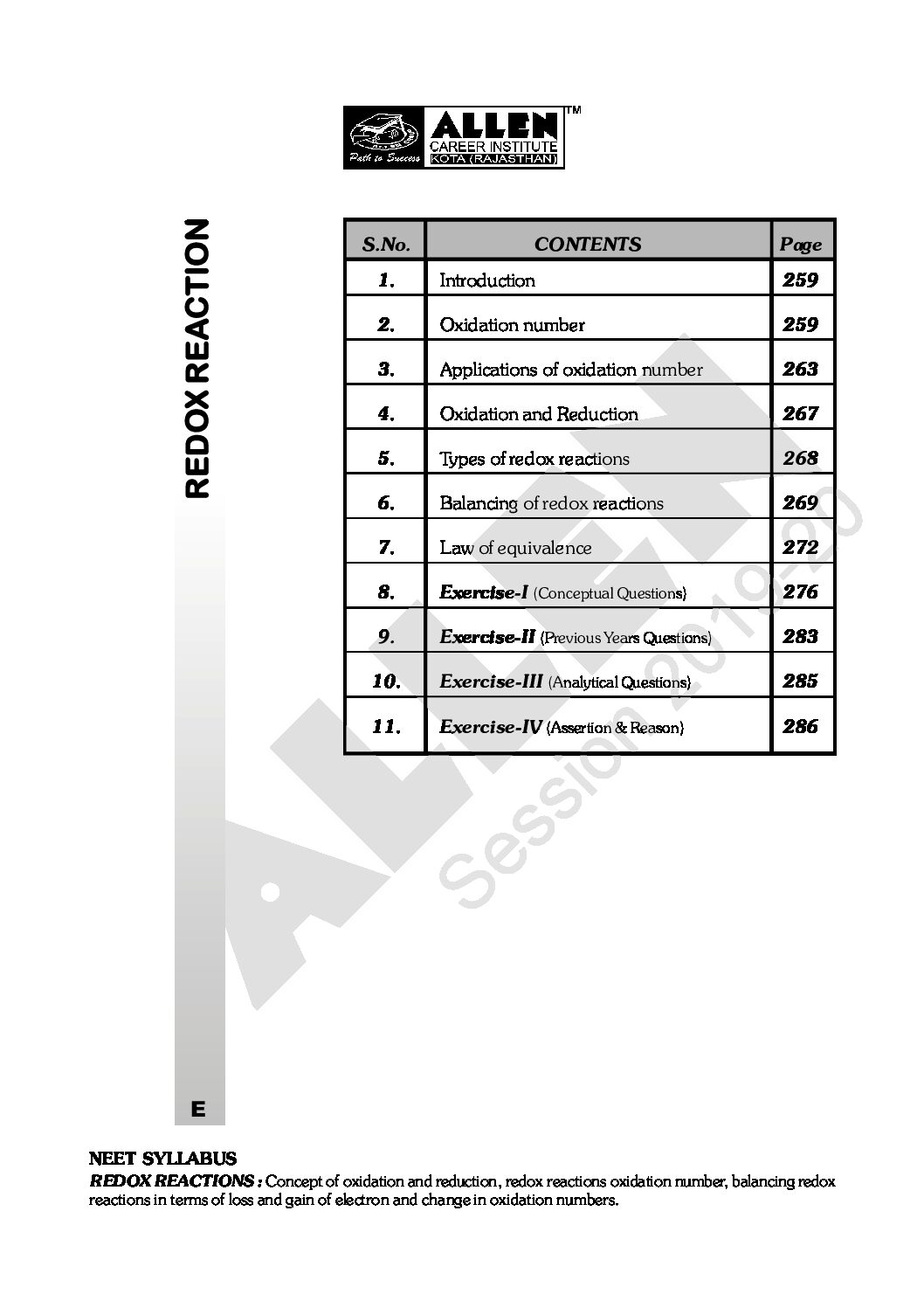

Electrochemistry notes class – 12/JEE/NEET
“Class 12 Electrochemistry: Core Concepts & Formula Mastery Notes”
Master the essential principles of Electrochemistry with these professionally structured notes. Covering Electrochemical Cells (Galvanic & Electrolytic), Electrode Potential, the Nernst Equation, Conductance in Electrolytic Solutions (Kohlrausch’s Law), and applications like Batteries and Corrosion. Includes all critical definitions, formulas, and conceptual distinctions for quick, high-yield revision. Numerical practice focus and clear diagrams ensure comprehensive exam readiness. Perfect for achieving top scores in Class 12 Boards and competitive exams.
₹100.00 Original price was: ₹100.00.₹30.00Current price is: ₹30.00.
Payment Methods:
Description
CHEMISTRY | CLASS XII | ELECTROCHEMISTRY
(Comprehensive Notes for Board & Competitive Exams)
Module 1: Fundamentals of Electrochemical Cells
- Introduction to Electrochemistry: Definition and scope—the study of interconversion of chemical energy and electrical energy through redox reactions.1
- Electrochemical Cells: Devices where redox reactions occur to either generate or consume electrical energy.2
- Galvanic (Voltaic) Cells: Converts chemical energy into electrical energy (spontaneous reactions, 3$Delta G < 0$).4
- Components: Anode (Negative, Oxidation), Cathode (Positive, Reduction).5
- Function of the Salt Bridge (Maintains electrical neutrality and completes the circuit).
- Components: Anode (Negative, Oxidation), Cathode (Positive, Reduction).5
- Electrolytic Cells: Converts electrical energy into chemical energy (non-spontaneous reactions, 6$Delta G > 0$).7
- Components: Anode (Positive, Oxidation), Cathode (Negative, Reduction).8
- Components: Anode (Positive, Oxidation), Cathode (Negative, Reduction).8
- Key Distinction: Detailed comparison table of Galvanic vs. Electrolytic Cells.
- Galvanic (Voltaic) Cells: Converts chemical energy into electrical energy (spontaneous reactions, 3$Delta G < 0$).4
Module 2: Electrode Potential and the Nernst Equation
- Electrode Potential ($E$): The potential difference developed between a metal electrode and the electrolytic solution of its ions.
- Standard Electrode Potential ($E^{circ}$): Electrode potential measured under standard conditions ($1 text{ M}$ concentration, $1 text{ atm}$ pressure for gases, $298 text{ K}$).
- Standard Hydrogen Electrode (SHE): The reference electrode ($E^{circ} = 0.00 text{ V}$).
- Cell Potential / EMF (9$E_{text{cell}}$): The difference between the reduction potentials of the cathode and the anode: 10
$$E_{text{cell}} = E_{text{cathode}} – E_{text{anode}}$$
- Electrochemical Series: Arrangement of elements based on their standard reduction potentials—key for predicting reaction spontaneity.11
- Nernst Equation: Relates electrode potential or cell EMF to the concentration of ions:
$$E_{text{cell}} = E^{circ}_{text{cell}} – frac{RT}{nF} ln Q$$
- Simplified form at $298 text{ K}$: The crucial formula for numerical problems.
- Applications: Calculation of $E_{text{cell}}$ and determination of Equilibrium Constant ($K_c$).
- Gibbs Free Energy and EMF: The relationship between spontaneity (12$Delta G$) and cell potential: 13
$$Delta G = -nFE_{text{cell}}$$
- Calculation of Standard Gibbs Free Energy ($Delta G^{circ}$) and its relation to $K_c$.
Module 3: Conductance in Electrolytic Solutions
- Resistance ($R$) and Resistivity ($rho$): Definitions and $text{SI}$ units.
- Conductance ($G$) and Conductivity ($kappa$): Reciprocal concepts, definition of Specific Conductivity ($kappa$) as $G times (l/A)$.
- Molar Conductivity (14$Lambda_m$):15 Definition, formula, and $text{SI}$ units ($ Lambda_m = frac{kappa times 1000}{M}$).
- Variation of $kappa$ and $Lambda_m$ with Concentration/Dilution: Graphical representation and conceptual explanation for strong and weak electrolytes.
- Kohlrausch’s Law of Independent Migration of Ions:
- Statement and mathematical form ($Lambda_{m}^{circ} = nu_{+} lambda_{+}^{circ} + nu_{-} lambda_{-}^{circ}$).
- Applications: Calculating Molar Conductivity at Infinite Dilution ($Lambda_{m}^{circ}$) for weak electrolytes and determining the Degree of Dissociation ($alpha$).
Module 4: Electrolysis and Industrial Applications
-
- Electrolysis: The process of chemical decomposition by passing an electric current through an electrolyte.16
- Factors Affecting Product Formation: Nature of electrolyte, nature of electrode, and Overvoltage/Overpotential.
- Preferential Discharge of Ions: Explanation based on standard reduction potentials.
- Faraday’s Laws of Electrolysis:
- First Law (17$m propto Q$): 18$m = ZIt$.19
- Second Law: $m_1/m_2 = E_1/E_2$.
- Numerical Formulas and applications.
- First Law (17$m propto Q$): 18$m = ZIt$.19
- Batteries (Primary and Secondary Cells): Detailed working principles, reactions, and uses.
- Primary: Dry Cell (Leclanché Cell) and Mercury Cell.20
- Secondary: Lead Storage Battery and $text{Ni-Cd}$ Cell (Rechargeable).
- Primary: Dry Cell (Leclanché Cell) and Mercury Cell.20
- Electrolysis: The process of chemical decomposition by passing an electric current through an electrolyte.16
- Fuel Cells: Introduction, working of the $text{H}_2-text{O}_2$ Fuel Cell, advantages, and environmental benefits.
- Corrosion: An electrochemical phenomenon.21
- Mechanism of Rusting of Iron.
- Methods of Prevention (e.g., Sacrificial protection, Galvanization).
Related
Vendor Information
- Store Name: Zenon
- Vendor: Zenon
-
Address:
sector 20
delhi 110086
Delhi


























